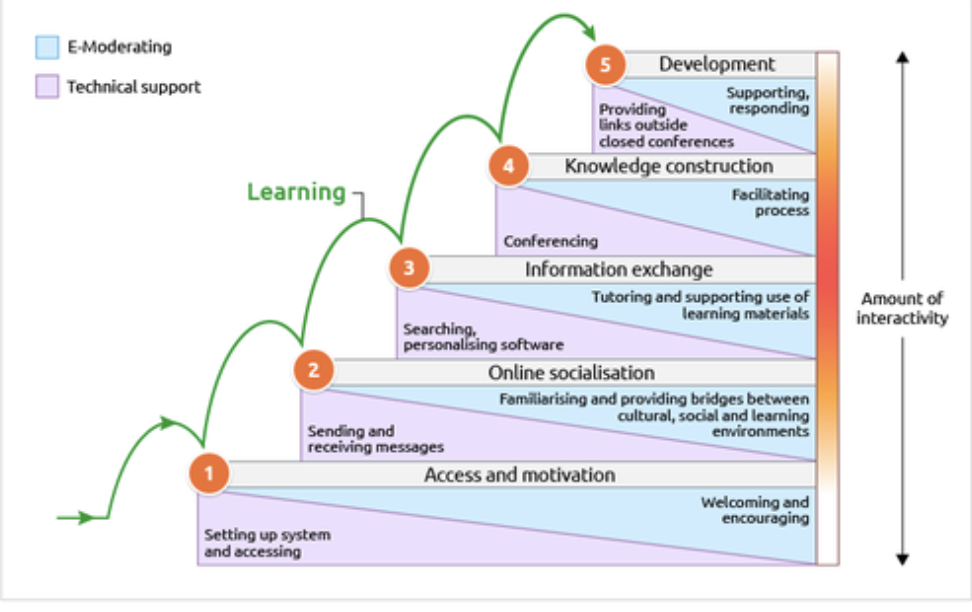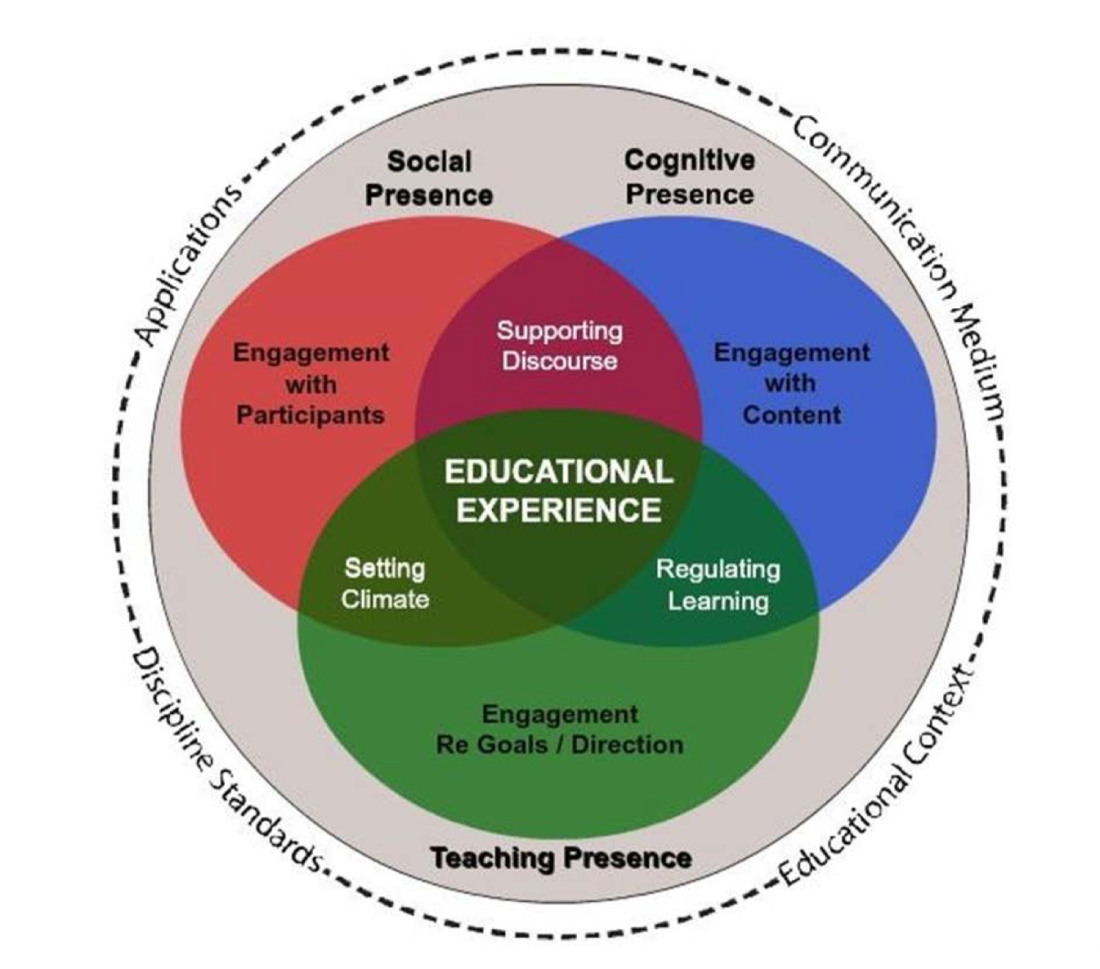The importance of proper design of courses is why I am sure many of took this course. Over the give topics and the various PBL topics we worked through, we all developed strong opinions on the correct way to design a course so that its participants are really engaged in the learning process in a way that is pedagogically rich.
A tool that I believe offers a useful structure for thinking through the issues surrounding design is Salmon’s give-step model (Figure 1; “Five Stage Model,” n.d.). Most fundamentally, we need to think through access, and the motivation firstly to learn, and secondly to come back, again and again, to a learning platform. Too often, designers assume that because they have included social and digital components these will be interesting in and of themselves. More often than not, this is a huge mistake.
Figure 1: Salmon’s Five Step Model

The next stage – online socialization – is also fraught with difficulty. Why would people who have come together for a course even want to socialize with each other? Surely they are only there to do what is required, and then leave? And yet, the profoundly social aspects of learning also play a big role, and we can’t ignore that even then most resistant people eventually get drawn in to some sense of group cohesion.
The other stages – information exchange, knowledge construction, and further developments of the learning outside the context of what is required on a specific course – are very much built on getting the first two steps right.
Another important aspect to think through in design is the so-called presences, which interact with the notion of the community of inquiry. In the previous topic, we considered in some detail how the three presences ought to work together in teaching practice (Figure 2; Vaughan, Cleveland-Innes, & Garrison, 2013): the teacher presence, cognitive presence, and social presence.:
Figure 2: The three presences

Thinking through the community of inquiry includes guidelines for creating and sustaining meaningful communities of inquiry, along the lines of the following seven principles:
- Plan for the creation of open communication and trust.
- Plan for critical reflection and discourse.
- Establish community and cohesion.
- Establish inquiry dynamics (purposeful inquiry).
- Sustain respect and responsibility.
- Sustain inquiry that moves to resolution.
- Ensure assessment is congruent with intended processes and outcomes. (Vaughan et al., 2013, p. 17):
According to Cleveland-Innes (2019) the notion of the community of enquiry was developed in the 1990s to theorise the text-only learning environments that were emerging as part of the entry of the academic and pedagogical world on the world-wide web at that time. The original model did not exclude the concept of emotional presence entirely, but included emotional presence under the definition of social presence. This was probably, as professor Cleveland-Innes joked, probably mostly because the men developed the model were uncomfortable to claim that they understood emotions.
Emotion is however imbued in all of the other dimensions of the model. Emotional presence was modelling her emotional presence, even while sick, to let us know she was “thrilled to be teaching” the ONL191 webinar (Cleveland-Innes, 2019).
Emotional presence is not just about eliciting specific emotions that good for learning… it is more about being aware of it, being aware of student emotions and acknowledging and directing them in order to temper emotions that may get in the way of the climate online. As the research team busy working on this has noticed, emotional presence in students won’t necessarily map within all of the the other three presences… Emotional presence maps to a unique presence. This is an interesting area for further enquiry!
Works referenced
Cleveland-Innes, D. M. (2019). Designing Digital Learning. Retrieved from https://padlet.com/laruhs/onl191topic4
Five Stage Model. (n.d.). Gilly Salmon. Retrieved April 18, 2019, from https://www.gillysalmon.com/five-stage-model.html
Vaughan, N. D., Cleveland-Innes, M., & Garrison, D. R. (2013). Chapter 1: Conceptual Framework. Teaching in blended learning environments: Creating and sustaining communities of inquiry(pp. 7–18). Edmonton, AB: AU Press. Retrieved April 18, 2019, from http://www.aupress.ca/books/120229/ebook/01_Vaughan_et_al_2013-Teaching_in_Blended_Learning_Environments.pdf